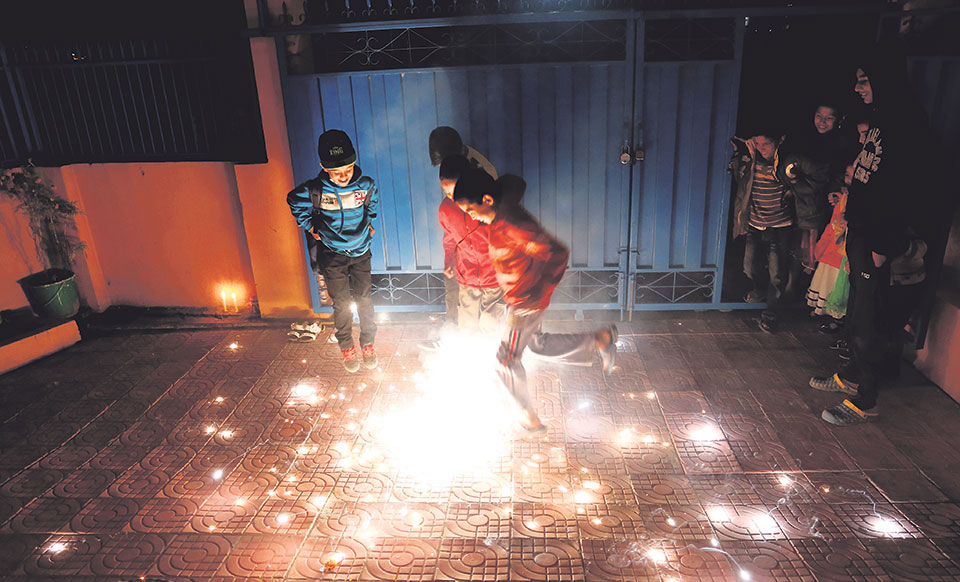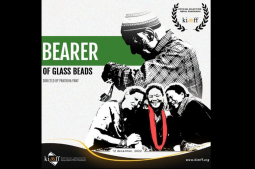Is AI dangerous or beneficial for humankind?
2 years ago
Rijal is a Grade 12 student at Rato Banagla School.

2 years ago

5 years ago

5 years ago

6 years ago

Streets full of children singing and dancing, houses covered from top to bottom with colorful lights, the aroma of festival food from every household, families getting together to exchange greetings and play cards, and fireworks being lit at every corner – this would be a typical description of the festival of lights commonly known as Tihar or Dipawali. Tihar is a five-day festival celebrated in Nepal where animals like cows, dogs, and crows are celebrated along with the relationship of brothers and sisters. What is interesting is how over time, celebrating with fire-crackers has become an integral part of Tihar, especially as fire-crackers do not have roots in Hindu traditions.
Although fire-crackers and fireworks bring children, families and neighborstogether in celebration, I firmly believe that there is a need to set a limit to their use and replace them with alternatives of green crackers. The government of Nepal banned the use of firecrackers and fireworks for environmental and safety reasons in 2006, but revelers continue to procure and use contraband products easily available across the porous border with India.
Althoughit may seem like the burning of fire-crackers by individuals and families is innocuous, at scale, they contribute significantly to air-pollution. In 2020, the Air Quality Index (AQI) in neighboring Delhi shot up to 454 – a measure past 300 is considered hazardous. Studies have found that the emission fromsuch firework are equivalent to smoking 34 to 464 cigarettes at a go. And while the nation gets covered in hazardous smog for weeks after the festival, the use of fireworks would have still not abated.
Firecrackers contain chemicals like Sulphur, Aluminum, and Copper and are lit by charcoal with fire powder. When the charcoal burns it emits gases like carbon-dioxide and carbon-monoxide. A colorless, odorless and tasteless gas, carbon-monoxide can often be fatal. The extensive burning of fire-crackers is a sourse of aerosols, black carbon, organics and trace gases.
Beside air-pollution, sound pollution is another major problem ensuring from the use of fire-crackers. The ear-splitting din arising from firecrackers not only disturb humans but also animals like dogs. As a country with a large population of street dogs and a whole day dedicated to celebrate dogs during Tihar, it is quite ironic that people use demonstrate no empathy towards animals and how fire-crackers might impact them. Likewise, as fire-crackers are lit at night, they affect old and sick people the most. Additionally, there are hundreds of cases of children getting severely injured due to a lack of adult supervision. There is also the high risk of houses and properties catching and getting destroyed by fires.
The question arises whether the cultural essence of Tihar, as it was traditionally celebrated in Nepal, can be restored. Tihar signified the cleaning and purifying of homes, the lighting of oil lamps, participating in floor-art using multi-colored powders, and the singing of special songs called Deusi-Bhailo, to invite the goddess of wealth, Laxmi to Nepali homes. It was a quiet and harmonious affair involving exchanges of greetings, blessings and small gifts. It was a time to come together as a family, as a community. It requires some kind of leadership and initiative, especially among the youth, whereby the huge amounts of money spent on fire-crackers can be repurposed towards donations for the less fortunate – bringing light in their houses, in the true spirit of the festival of lights, Tihar.
Since the craze of fire-crackers is mostly among young children, parents and families must aware children about its health and safety consequences. People must learn to enjoy these festivals without the need to burn fire-crackers. The police and government should also strictly monitor the illegal smuggling and sale of fire-crackers during festive season. It is important to create awareness among people throughout the nation about the hazards. If people are not aware about the health and safety impacts of fire-crakers, then it will be impossible to control its usage.
The firework industry is also notorious for the use of child labor. Many of these factories employ children who are underpaid and exploited. This proves that the joy derived from the lighting of fire-crackers veils social and environmental maladies that need immediate addressing. So this Tihar, lets come together as a society to diminish the consumption of fire-crackers - for the health of our people, safety of our children, for our animals, and most importantly, for the environment.

- by RAKHI BIND

- by Republica

- by Bishakha Koirala

- by Divya Adhikari
Leave A Comment